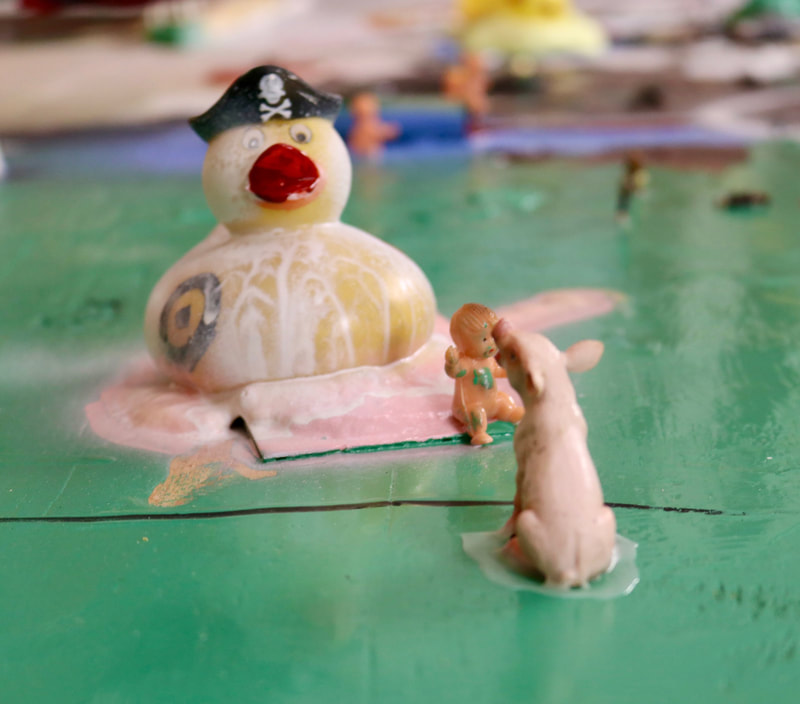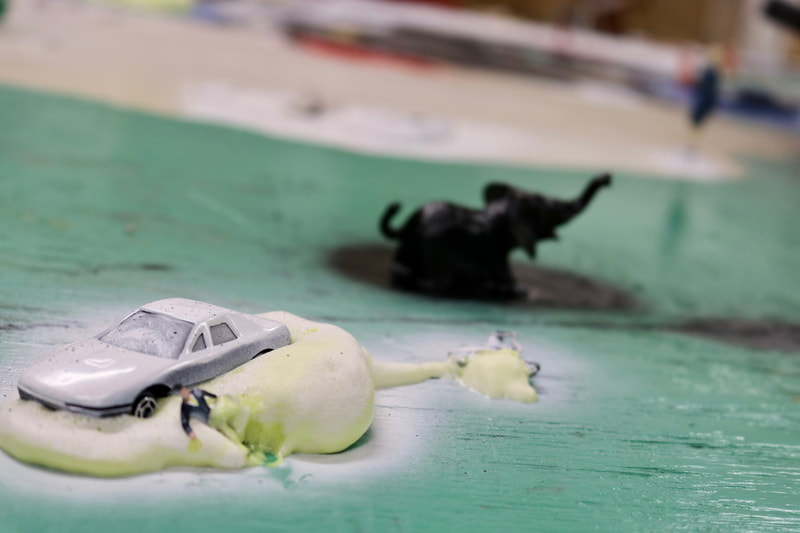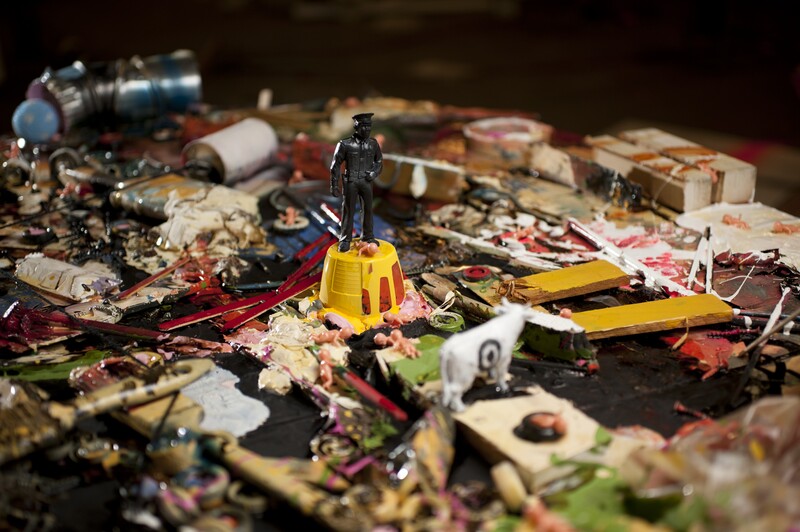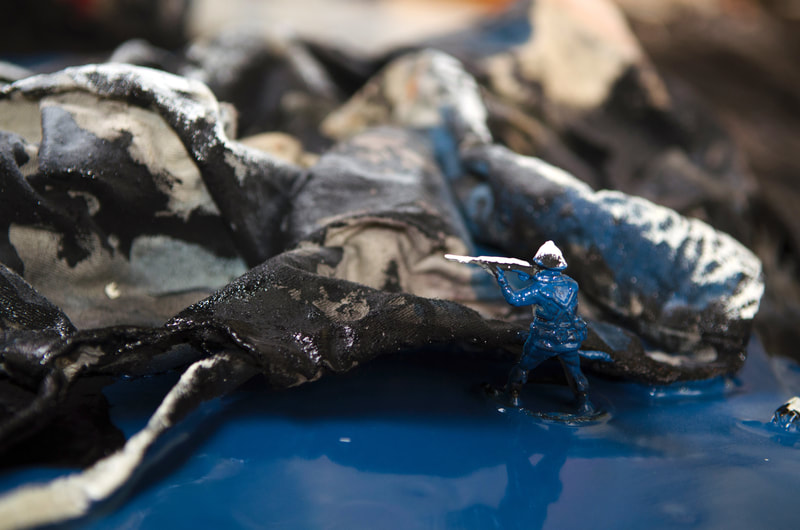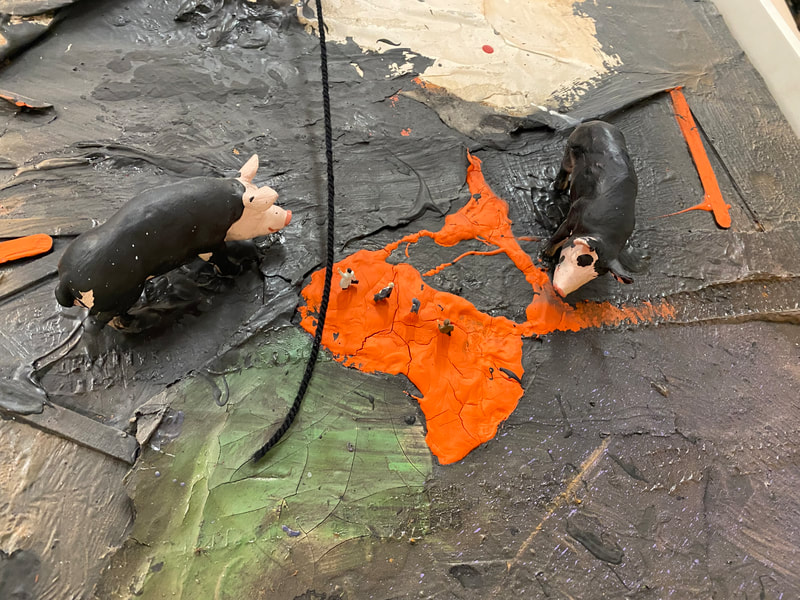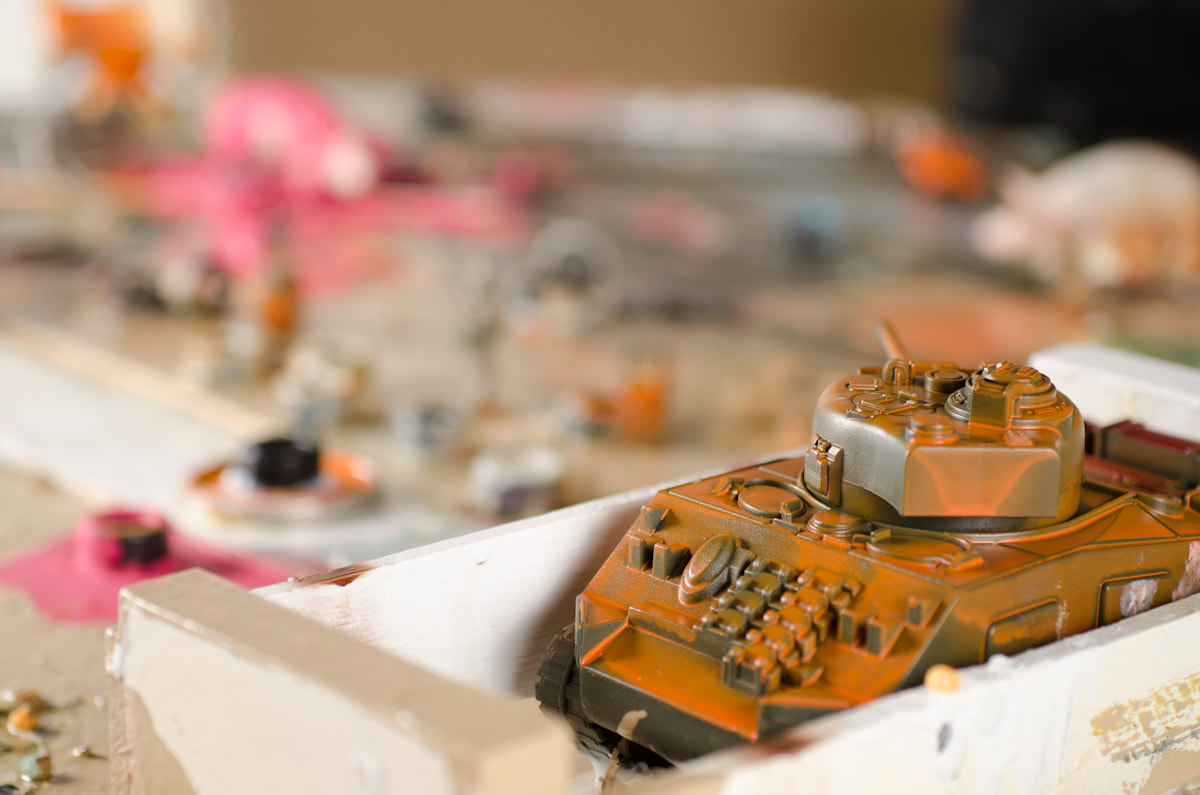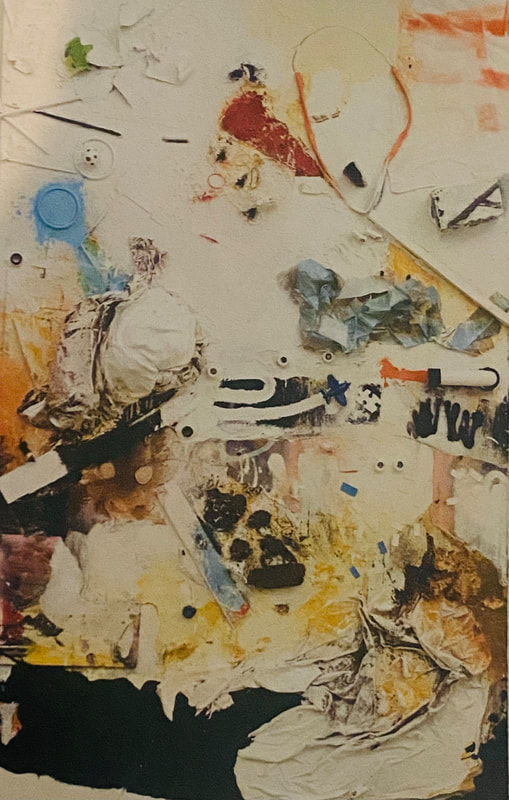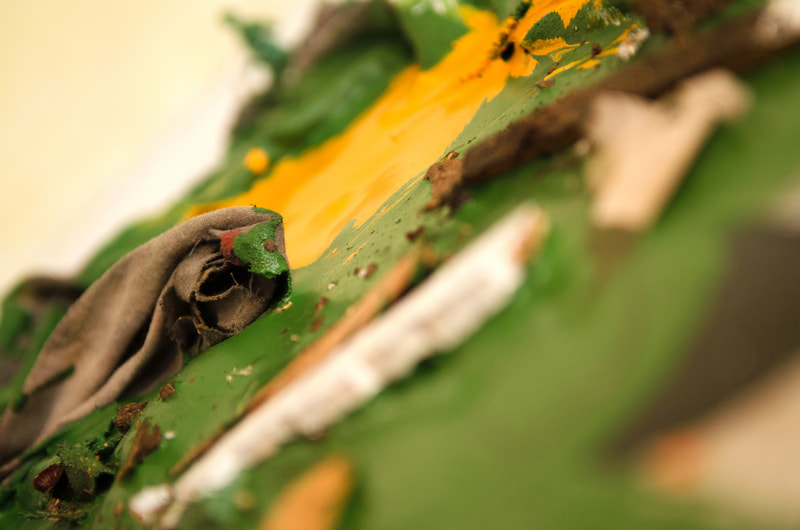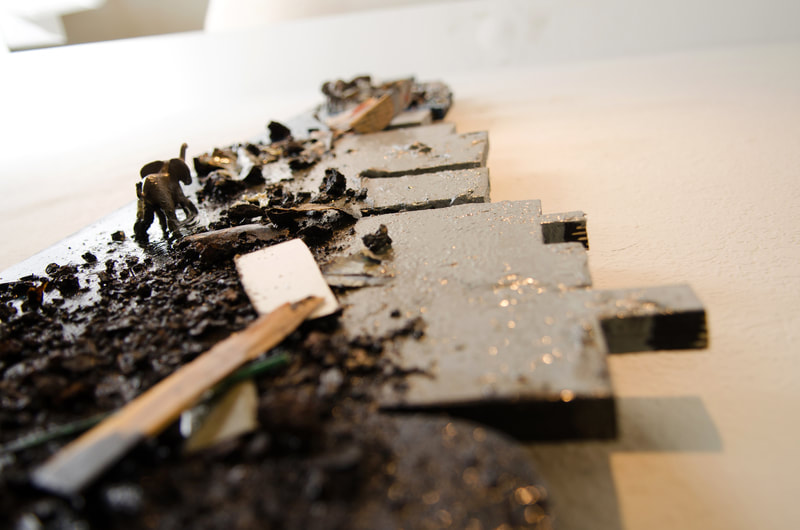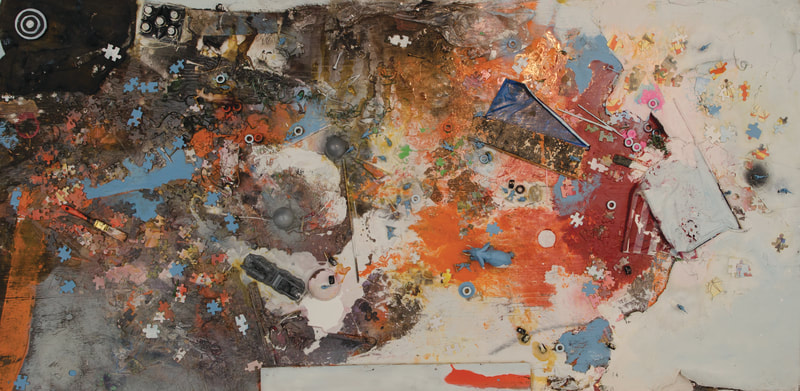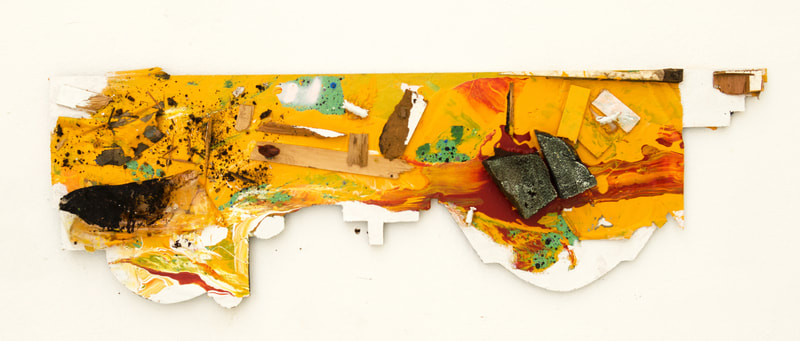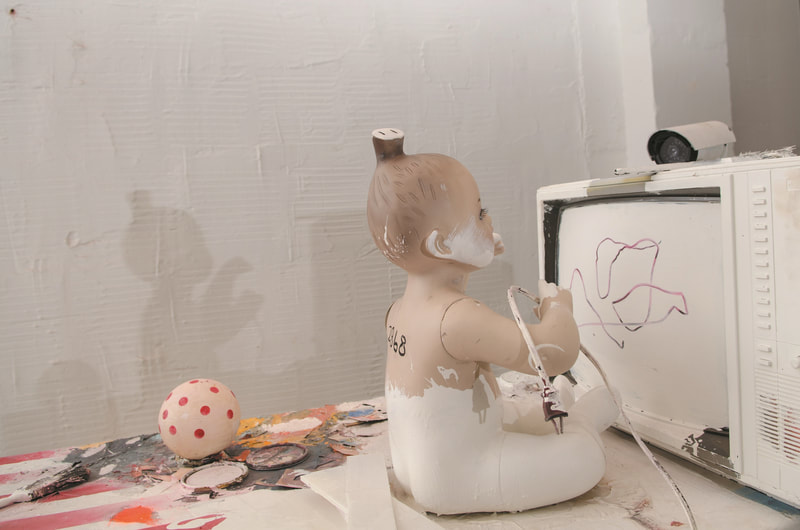|
|
By Manfred Schneckenburger (Art Historian and director at documenta 6 in 1977 and documenta 8 in 1987) The American myth needs to be reexamined in the 21st Century, even rewritten. One of the most important contributors in this regard is being produced by the American Marcus Jansen. With Caribbean and German roots, he is a painter through and through, a painting diagnostician with a gaze as comprehensive as it is incisive. He outs the American myth of the nation's beginnings and steadfast progress of for radical examination. his results are disconcerting- and can be frightening. Whereas in the 1830's the founder of genuinely American Landscape painting, Thomas Cole, pictured the course of Empire from savage beginnings to its ultimate decline against a backdrop of classical facades and rows of columns (under the influence of a famous book by the historian Edward Gibbon, in Jansens work destruction come to cast-iron architecture and wooden beach stacks, organically curved structures or a skewed Disneyland... By Tom Hall, ARTSSwfl, 2012
Aerial View Series New in 2012 is Jansen’s “Aerial View” series. The series evolved innocuously enough. A collector visiting Jansen in his studio took note of one of Jansen’s color palettes, an old table top he uses for mixing paint. “You know what? This is really interesting,” the collector remarked, prompting Jansen to view the mounds of paint accumulated on the wood surface with fresh eyes. Its topography reminded him of a front line combat zone he’d flown over in a chopper during his Gulf War tour in 1991. On the desert landscape below, he could see the devastation that had been wrought by U.S. forces. And that mnemonic connection gave impetus to a new series of 3-D works that Jansen calls aerial views. “I’d been painting largely two-dimensional landscapes from traditional angles for the past 15 years,” Jansen told an Artist Gallery Talk audience at Florida Gulf Coast University on February 23, 2012, “and thought it would be interesting to provide viewers with a different perspective.” So Jansen decided to see what he could carve out of the experience, which seemed plausible given that he rarely pre-plans his compositions, preferring instead to explore the theme and subject matter as the painting process unfolds. His first two aerial pieces sold as soon as Jansen showed them, which encouraged Jansen to do four more, and the 3-dimensional work he took to Art Basel, Rock a bye baby (above and to the right) was similarly well-received. “The [Aerial View] paintings are still ambiguous, perhaps even more immediate and raw, and could be mounted horizontally as a table (as his gallerists did for the first time at Art Basel) or [hung] on walls for viewers to experience what at first sight may appear chaotic but yet in order,” Jansen writes of the series. “My subject matter continues to investigate what is happening in the current century and follows a fast moving transformation of the world order and the condition of populists and earth, and reflects my personal experience through landscape gestural paintings.” “It’s a new venue,” Jansen summed up in his FGCU Gallery Talk. “I’m exploring it. I like it. It’s very spontaneous. (Most of my work is spontaneous.) It’s more impulsive. More like action painting.” |
2016, Marcus Jansen, The Overseers, on the back Cover of New American Paintings No. 124,
|
Chaotic World 2021
The overseer and his Island 2011
Ground 0, 2011
Landscapes 2013
Night range 2013
The Pit
Battlefield
Friend or Foe
The Tower Guard
New World Order
Rock a Bye Baby
Through Night Vision Googles
Coastline
Puzzling Wars of the World
Birds Eye View
Hurricane
Resistance






